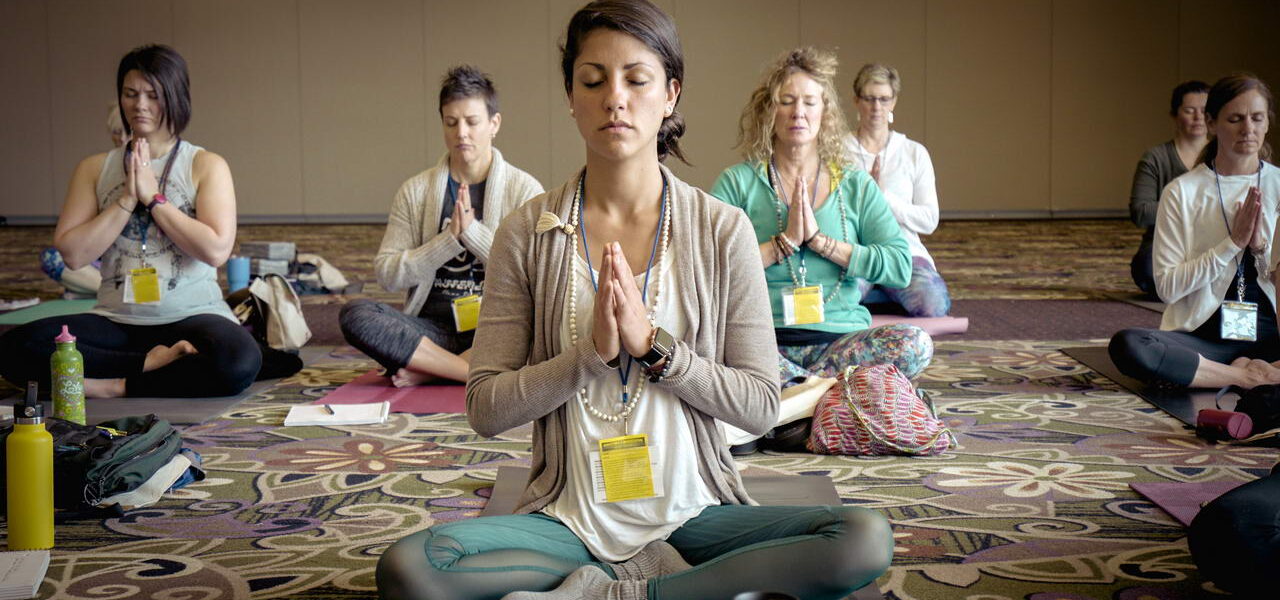Yoga is renowned for its numerous physical, mental, and spiritual benefits. However, like any physical activity, safety considerations are paramount to ensure a positive and injury-free experience. The question often arises: Are yoga classes safe? In this article, we’ll explore the factors that contribute to the safety of yoga classes and provide insights to help you make informed choices on your yoga journey.
Explore Meditation Retreats & Wellness Retreats
Explore Yoga Retreats with Tejomaia.com

Qualified Instructors:
The safety of a yoga class largely depends on the expertise of the instructor. Qualified and certified yoga teachers have undergone comprehensive training that includes anatomy, alignment, modifications, and injury prevention. Look for instructors with recognized certifications and teaching experience.
Class Level and Style:
Different yoga styles cater to various skill levels. Choose a class appropriate for your experience. Beginners should opt for classes labeled as “beginner,” “foundations,” or “gentle.” Advanced practitioners can explore more challenging styles, always keeping their skill level in mind.
Personal Limitations:
Communicating your limitations and injuries to the instructor is crucial. A responsible teacher will offer modifications and alternatives to accommodate individual needs. Be honest about your abilities, and don’t feel pressured to attempt poses beyond your comfort level.
Physical Alignment and Adjustments:
Precise alignment is vital in yoga to prevent strain or injury. Instructors should provide clear cues and visual demonstrations. Adjustments can be beneficial when done mindfully and with consent. If you’re uncomfortable with hands-on adjustments, let your instructor know.
Warm-Up and Cool-Down:
Adequate warm-up prepares your body for the practice by increasing blood flow and flexibility. A proper cool-down helps prevent muscle soreness. Respectful instructors structure classes to include both warm-up and cool-down sequences.
Breath Awareness:
Breathing is fundamental in yoga. A safe class emphasizes the synchronization of breath with movement. This practice not only enhances mindfulness but also prevents straining due to breath-holding.
Props and Modifications:
The use of props like blocks, straps, and bolsters can enhance alignment and comfort. Instructors should encourage their use to create a safe and accessible practice for all participants.
Observation and Consent:
A responsible instructor observes students during class and ensures they are performing poses safely. Teachers should encourage students to honor their bodies and never push beyond their limits.
Challenging vs. Overexertion:
Yoga should be challenging yet sustainable. Pushing yourself excessively can lead to injuries. Pay attention to your body’s signals and avoid any movement that causes pain or discomfort.
Trust Your Intuition:
If something doesn’t feel right, trust your instincts. It’s okay to opt-out of poses or sequences that don’t align with your comfort level or physical condition.

Yoga classes can be safe and enriching environments when approached mindfully. The responsibility lies in the hands of both the instructor and the practitioner. As a participant, communicate openly with your instructor, listen to your body, and prioritize your well-being. Qualified and experienced instructors, clear communication, alignment focus, and a respectful environment all contribute to a safe and beneficial yoga class experience. Remember, safety is a shared responsibility, and by fostering a mindful and respectful practice, you can fully enjoy the benefits that yoga has to offer.
Explore Meditation Retreats & Wellness Retreats
Explore Yoga Retreats with Tejomaia.com


